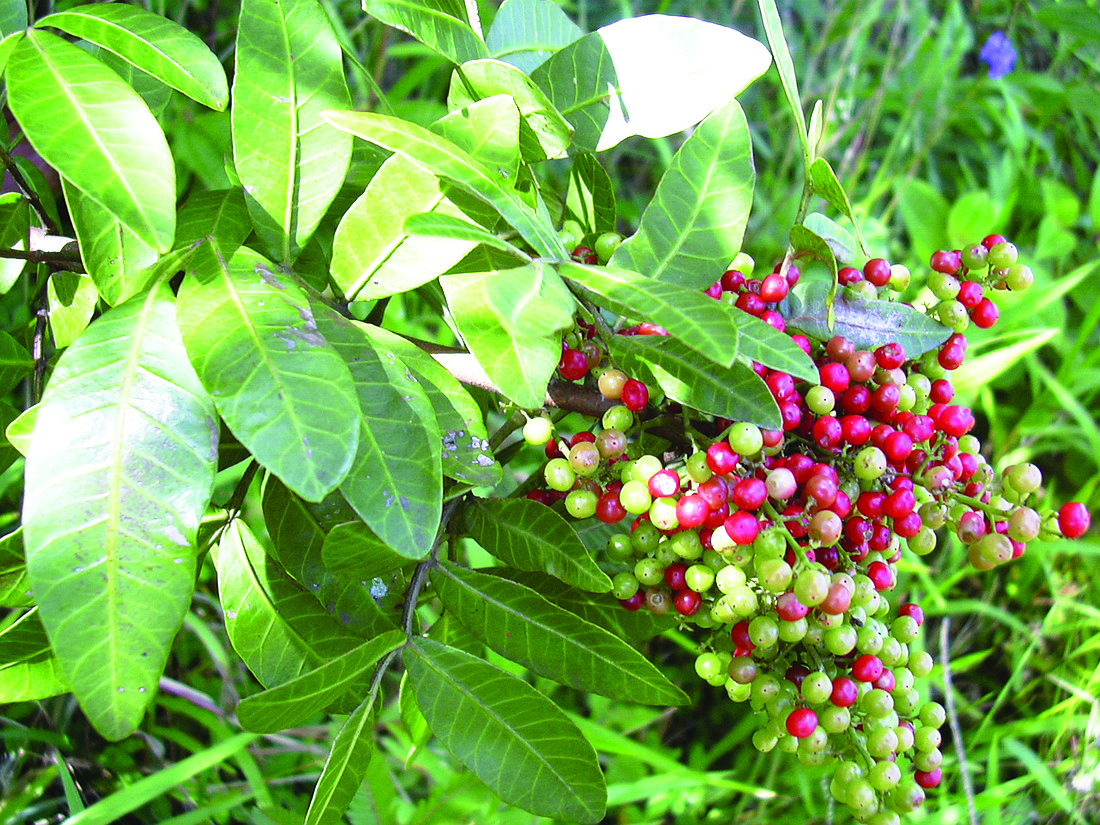- April 19, 2024
-
-
Loading

Loading

Lakewood Ranch community development districts will increase efforts to combat invasive plant species around retention ponds and to enhance common area landscaping in the next fiscal year.
Budgets approved for Phase 1 Lakewood Ranch CDDs on Aug. 18 show a collective increase of about $131,000 for environmental and conservation efforts.
The districts cleared Brazilian peppers from some common areas about four years ago, and next fiscal year will work to further eradicate the plant from the rest of the common areas, particularly behind homes. As the vegetation is thinned, new plant materials will need to be installed.
The Brazilian pepper is a medium-sized, shrub-like tree native to Brazil and Paraguay. It grows 15 to 30 feet in height and typically forms dense forests that exclude all other plant life by producing a dense canopy. These forests are considered to be poor habitat for native wildlife species and may negatively impact bird populations. Possession of Brazilian pepper with the intent to sell or plant is illegal in Florida without a special permit, according to the Florida Fish and Wildlife Conservation Commission.
“We’ve made some conscious efforts this year to be more aggressive on pepper tree eradication and improving ponds,” CDD 2 Chairman Pete Bokach said. “We’re extending beyond what we’ve done in the past.”
The districts also will continue to replace aging plant materials and improve landscaping in berms and common areas.
“Across the districts, the infrastructure is aging,” Lakewood Ranch Town Hall Financial Director Steve Zielinksi said. “That is a predominant focus of the districts, to start replacing that infrastructure.”
Other districtwide budget increases include for Lakewood Ranch Town Hall operations and maintenance and a rate increase by irrigation water utility Braden River Utility. Starting Jan. 1, 2017, the districts (except for District 6, which uses well water for irrigation) will pay $1.20 per 1,000 gallons compared with the current rate of $1.05 per 1,000 gallons. The districts have allocated an increase of $138,000 collectively for utilities, including the irrigation water rate increase.
Other budget meeting highlights included:
CDD 1: With a $2 million budget, the district will use $268,000 left over from the previous fiscal year and $22,300 of infrastructure reserves to mitigate assessment increases. The overall budget increase is 4.1%, or about $38 per household annually.
CDD 2: With a budget of $3.6 million, District 2’s biggest increase is for costs associated with the turnover of utilities (9.4%) to the county. The district will use $117,000 of 2015/2016 carry-forward money to defray its overall expenses. It is using $186,600 in road reserves to offset a project to resurface/repave parts of Legacy Boulevard and $300,000 in infrastructure reserves to offset its proposed water/sewer utility turnover. The total budget increase is 2.8%, equating to a $42 per year on average increase per household.
CDD 4: With a $2.1 million budget, District 4 will use $124,400 of carry-forward surplus to mitigate assessment increases. Increases are 3.3% overall, averaging $40 annually per household.
CDD 5: With a $2.8 million budget, District 5 is the only district slated to have assessment decreases, with households paying an average of 1.3% or $14 a year less than in Fiscal Year 2016. The district will use $274,700 reserves from last fiscal year and $228,000 of reserves for road projects to offset increases.
CDD 6: With a $960,800 budget, District 6 will use a surplus of $17,000 to mitigate assessment increases, but residents will see an average 3.8% increase, or $77 per household, in annual increases. Supervisors have been working on utility system turnovers and other expenses that they hope will reduce costs in the future. “The majority of our increases are special projects that lead to longterm savings,” District Chairman Jim Rogoze said.